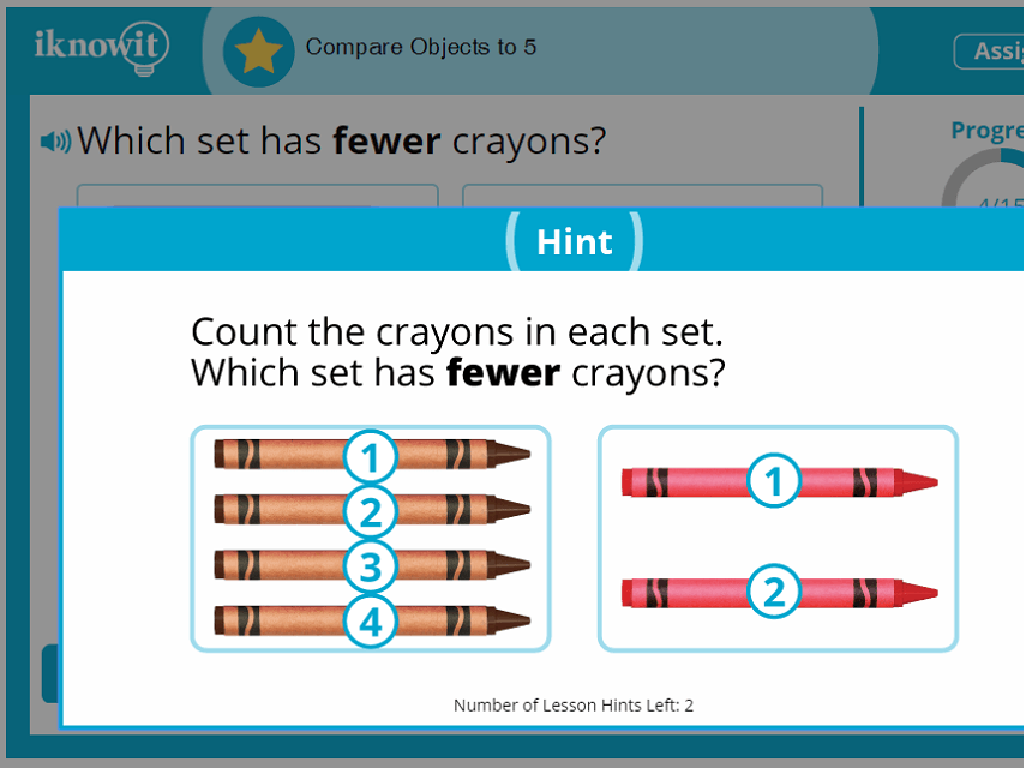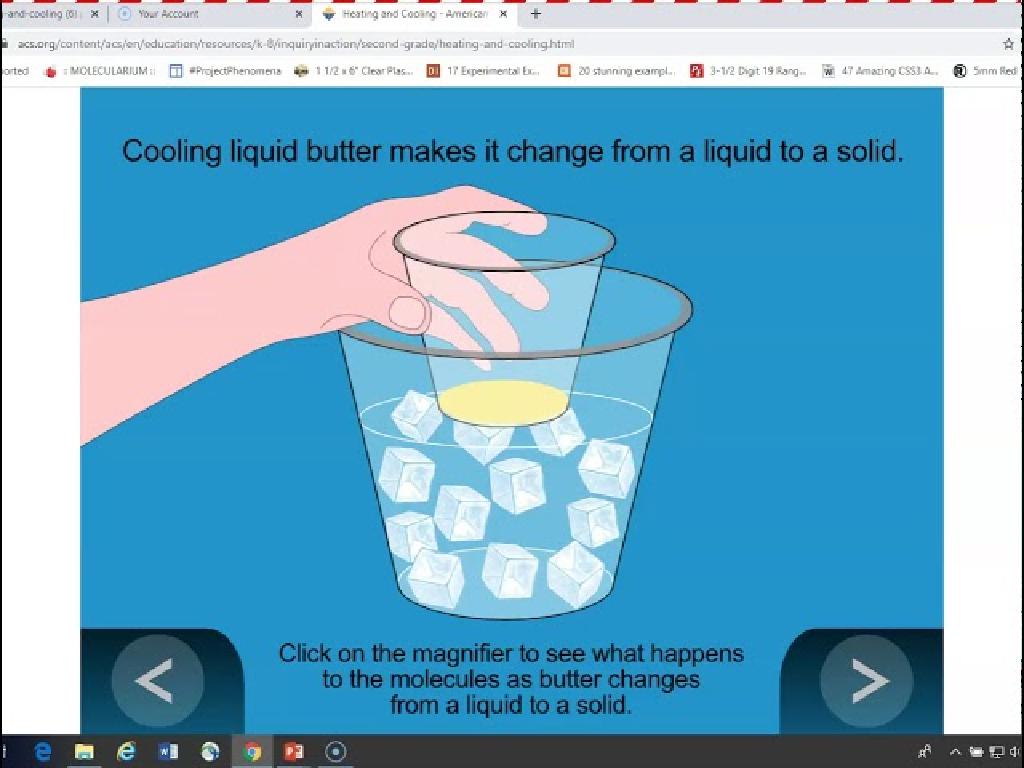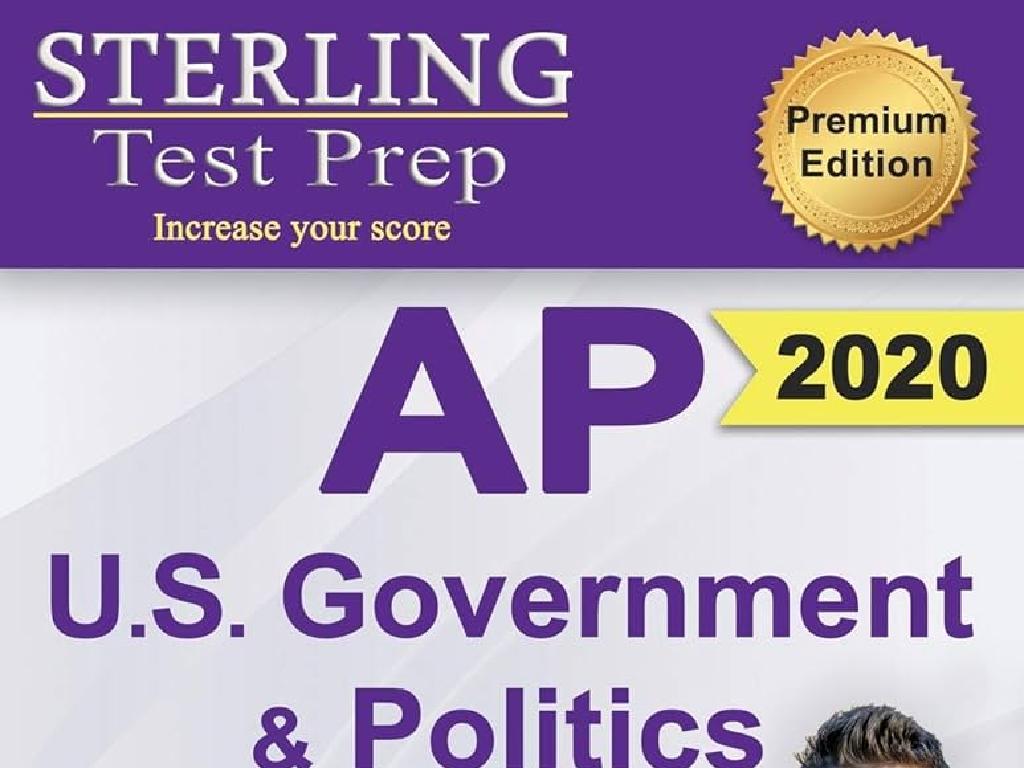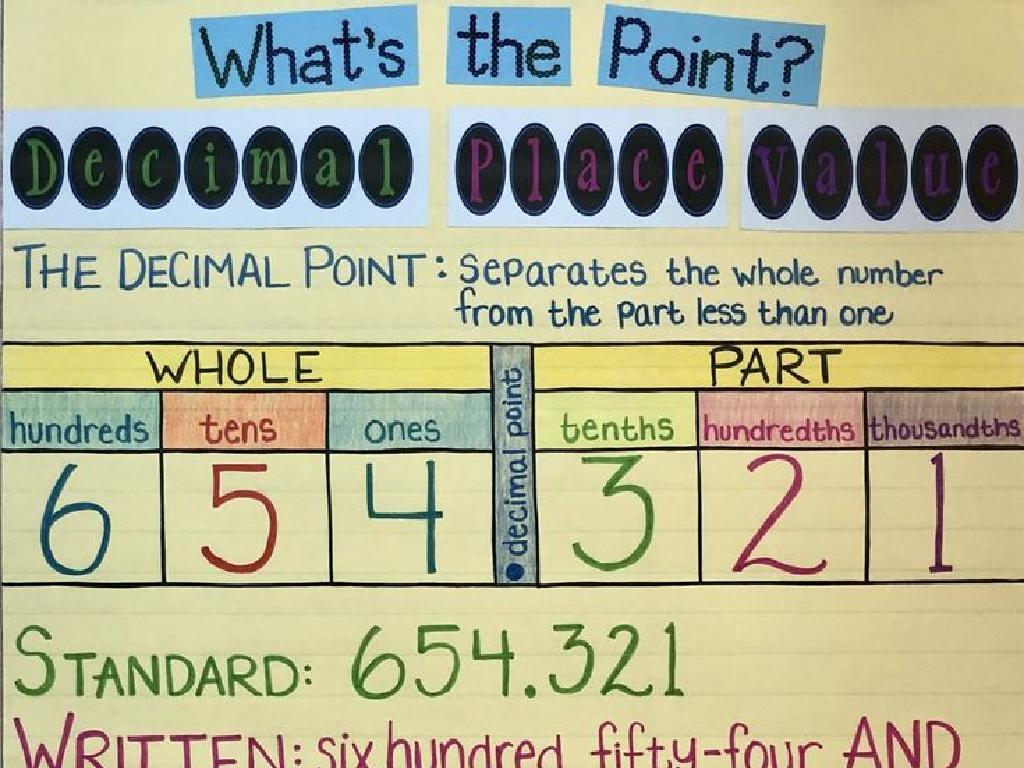Is It A Telling Sentence Or An Asking Sentence?
Subject: Language arts
Grade: First grade
Topic: Sentences
Please LOG IN to download the presentation. Access is available to registered users only.
View More Content
Welcome to Sentences!
– Learning about sentences
– What is a sentence?
– A sentence is a group of words that expresses a complete thought.
– Sentences share thoughts
– We use sentences to tell people what we think or how we feel.
– Telling vs. asking sentences
– Telling sentences state something. Asking sentences ask a question.
|
This slide introduces first graders to the concept of sentences. Begin by explaining that a sentence is a way to put words together so that they make sense and express a complete idea. Emphasize that sentences are the building blocks of communication, allowing us to share our thoughts, feelings, and information with others. Highlight the difference between telling sentences, which make a statement, and asking sentences, which pose a question. Use examples to illustrate the point, such as ‘The cat is sleeping.’ for a telling sentence and ‘Is the cat sleeping?’ for an asking sentence. Encourage the students to come up with their own examples and to listen for telling and asking sentences in everyday conversation.
Telling Sentences
– Telling sentences share information
– Like ‘The sun is bright.’ or ‘I have a red ball.’
– They finish with a period
– Look for the dot at the end of a sentence
– Example: ‘The cat is fluffy.’
– This sentence gives us a fact about the cat
|
This slide introduces the concept of telling sentences to first graders. Emphasize that telling sentences are used to state facts or give information. Show them that these sentences always end with a period, which is a small dot at the end. Use simple and relatable examples to illustrate telling sentences. Encourage students to come up with their own telling sentences and practice writing them with the correct punctuation. Reinforce the idea that the period signifies the end of a thought or statement.
Asking Sentences
– Asking sentences ask a question
– Like ‘What is your name?’ or ‘Where is the park?’
– They end with a question mark
– Remember, it looks like a little hook at the end!
– Example: ‘Is the cat fluffy?’
– It’s asking about the cat’s fur. We’re curious!
|
This slide introduces the concept of asking sentences to first graders. Emphasize that asking sentences are used when we want to find out information and they always end with a question mark. Show them the question mark and explain its shape. Use the example provided to illustrate an asking sentence and encourage students to come up with their own examples. Ask them questions about their surroundings or interests to make it interactive and help them identify asking sentences in their daily conversations.
Let’s Practice: Telling vs. Asking Sentences
– Listen to the sentence carefully
– Decide if it’s telling or asking
– Is the sentence giving information or looking for an answer?
– Use your ‘listening ears’
– Get ready to answer out loud
– Practice makes perfect, so let’s have fun with it!
|
This slide is for an interactive class activity to help first graders distinguish between telling sentences (declarative) and asking sentences (interrogative). Start by explaining that telling sentences state facts or opinions, while asking sentences seek information and end with a question mark. Encourage the children to listen attentively as you read sentences aloud. After each sentence, pause to give them a moment to decide the type of sentence. Prompt them to respond with ‘telling’ or ‘asking’ and explain their reasoning. This activity will enhance their listening and critical thinking skills. Possible sentences for practice: ‘The sky is blue.’ (telling), ‘Can you count to ten?’ (asking).
Telling vs. Asking Sentences
– Understanding sentence types
– Telling sentences make a statement
– For example, ‘The cat is sleeping.’
– Asking sentences ask a question
– For example, ‘Is the cat sleeping?’
– Let’s practice with examples
|
This slide is aimed at helping first graders differentiate between telling sentences, which make statements, and asking sentences, which ask questions. Start by explaining the two types of sentences. Telling sentences often end with a period and give information. Asking sentences end with a question mark and are used when the speaker wants to know something. Use clear, simple examples to illustrate the difference. Encourage the students to practice by coming up with their own sentences or identifying sentence types from a story or picture. This interactive approach will help solidify their understanding of the concept.
Your Turn: Creating Sentences!
– Let’s make a telling sentence
– A telling sentence might say, ‘The sun is bright.’
– Now, let’s craft an asking sentence
– An asking sentence might be, ‘Is the sun bright today?’
– Telling sentences state a fact or opinion
– Asking sentences look for an answer
|
This slide is an interactive activity for the students to practice making their own sentences. Start by explaining that a telling sentence, also known as a declarative sentence, gives information and ends with a period. Then, introduce the asking sentence, also known as an interrogative sentence, which asks a question and ends with a question mark. Encourage the students to think of their own examples for each type of sentence. You can prompt them with subjects or ideas if they need help getting started. After they’ve created their sentences, have a few students share with the class to ensure understanding. This activity will help solidify their grasp of the difference between telling and asking sentences.
Class Activity: Sentence Sort!
– Work in groups to sort sentences
– Decide if it’s telling or asking
– Telling sentences state facts or opinions. Asking sentences ask questions.
– Place sentences in the correct group
– Share findings with the class
– Discuss why you chose each group for the sentences.
|
This activity is designed to help first graders differentiate between telling sentences (declarative) and asking sentences (interrogative). Divide the class into small groups and provide each group with a set of sentence cards. Instruct them to read each sentence and decide whether it is telling something or asking something. Once they categorize the sentences, each group will share their sorted sentences with the class and explain their reasoning. This will encourage discussion and critical thinking about sentence structure. Possible sentences for the activity: ‘The sky is blue.’, ‘What is your name?’, ‘I like to play outside.’, ‘Where is the library?’
Becoming Sentence Experts!
– Celebrating our learning journey
– Telling vs. asking sentences
– A telling sentence states a fact or opinion.
– Punctuation marks are clues
– Periods end telling sentences, question marks end asking sentences.
– You’re now sentence detectives!
|
Congratulations to the class for mastering the difference between telling and asking sentences. Reinforce the concept that telling sentences, which state facts or opinions, always end with a period. In contrast, asking sentences, which seek information, end with a question mark. Encourage the students to practice by reading aloud and identifying the sentence types in their favorite books or by writing their own examples. Celebrate their progress by calling them ‘sentence experts’ and encourage them to keep looking for clues in punctuation to help them understand what kind of sentence they are reading or writing.






